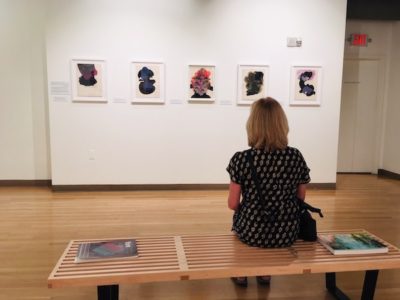
Virginia Woolf strikes a pose—in my imagination. She looms large in many writers’ minds as a genius memoir writer and fiction writer, a most important author of the 20th century.
She was a founding member of the famed soiree “Bloomsbury Group,” a revolving-door-meetup of writers, philosophers, intellectuals, and artists who regularly shared their work in a part of London called Bloomsbury, hence their name. I imagine it was a writers’ critique group on steroids.
Moments of being
Whether we are part of a writers’ group or not, don’t we all hope to improve our writing by learning from others? One way to help ourselves is to take a little time to read and study genius writers like Virginia Woolf. Years ago, I bought the slim volume, A Room of One’s Own, which primarily advocates for women to write and to claim time and space they need for writing. Gee, here we are in the 21st century, and this topic is still relevant.
Later, for a memoir class, I read a collection of Woolf’s memoir pieces that were not published until after her death—Moments of Being. What are moments of being? In a nutshell, they are bits of time when we feel intense emotion, when something superbly significant captures our attention, and we feel compelled to create a meaning for it, to associate meanings with it, to remember it. Those moments stay with us. I daresay that for writers, after such moments we cannot avoid ruminating about them, writing them down, examining their qualities, diving into them for treasures of meaning. We find ourselves working those moment around on the page to fix them in time and place, like a portrait in a frame. Maybe we include them in our own memoir pieces. Maybe we make moments like that shine in the life of a character we are developing for a novel or short story. Pivotal moments. Moments of life in full tilt.
What about non-being?
Sometimes it is useful to describe something in terms of what it is NOT, helping to clarify that “something.” I think a good way to communicate Woolf’s thoughts about being and non-being is to let her tell you herself from a section of that book.
“Often when I have been writing one of my so-called novels I have been baffled by … how to describe what I call in my private shorthand — “non-being.” Every day includes much more non-being than being. Yesterday for example, Tuesday the 18th of April, was [as] it happened a good day; above the average in “being.” It was fine; I enjoyed writing these first pages; my head was relieved of the pressure of writing about Roger; I walked over Mount Misery and along the river; and save that the tide was out, the country, which I notice very closely always, was coloured and shaded as I like—there were the willows, I remember, all plumy and soft green and purple against the blue. … These separate moments of being were however embedded in many more moments of non-being. I have already forgotten what Leonard and I talked about at lunch; and at tea; although it was a good day the goodness was embedded in a kind of nondescript cotton wool. This is always so. A great part of every day is not lived consciously. One walks, eats, sees things, deals with what has to be done; the broken vacuum cleaner; cooking dinner … When it is a bad day the proportion of non-being is much larger.” (Virginia Woolf: Moments of Being)
Cotton wool vs. consciousness
I love that phrase Woolf uses to describe hum-drum everyday actions and thoughts like opening mail, setting appointments, paying bills, housecleaning, car maintenance tasks—cotton wool. Maybe I should speak for only myself here, but don’t we often go through parts of our days in a fog, at a slug’s pace, and maybe even half asleep? Woolf calls us out about this: “a great part of every day is not lived consciously.” What would happen if we decreased the percentage of cotton wool in our days and increased moments of conscious living—moments of being—especially when we write?

Iris Zerba
excellent description of Woolf’s thoughts and ideas.